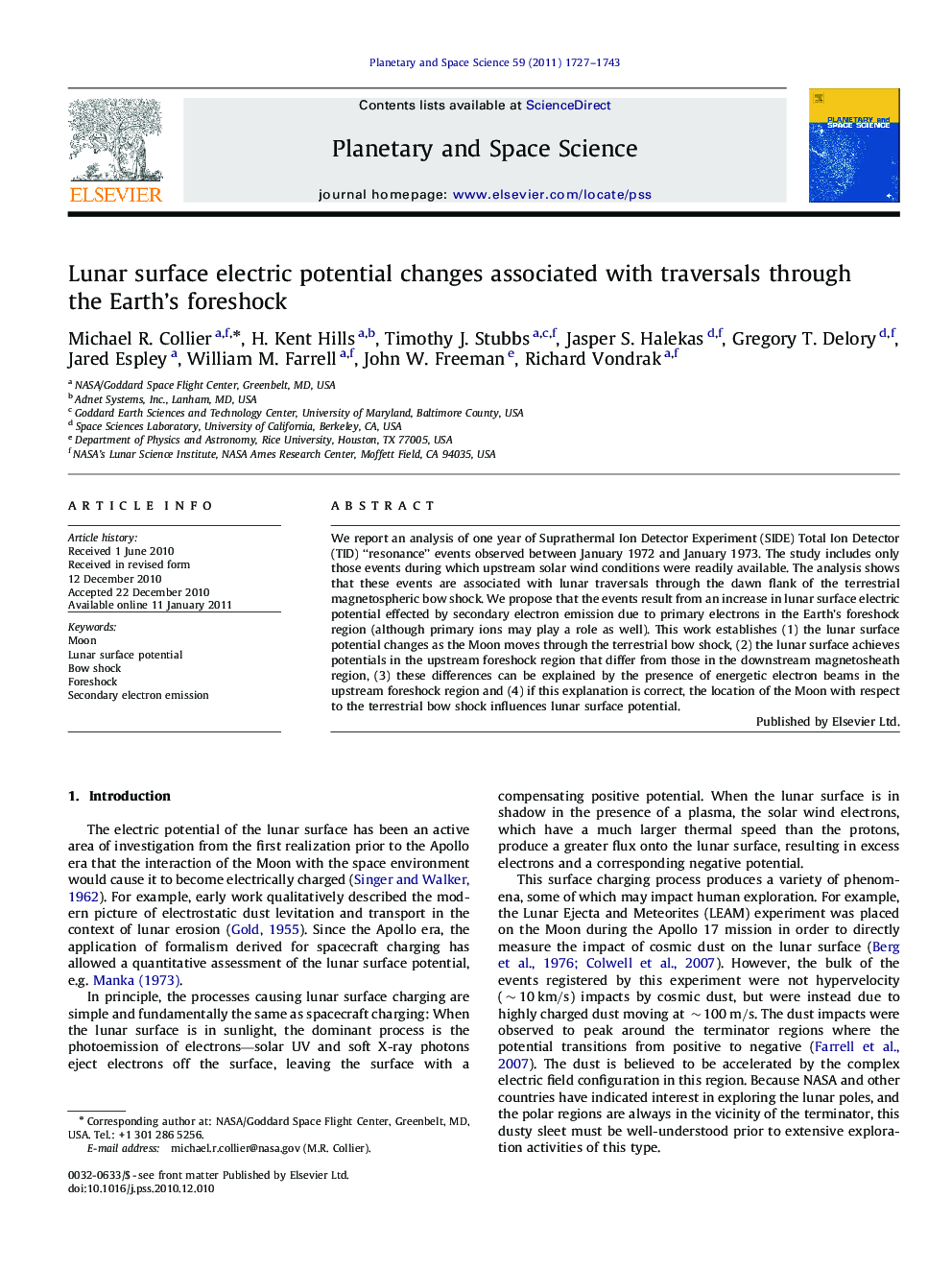| Article ID | Journal | Published Year | Pages | File Type |
|---|---|---|---|---|
| 1781625 | Planetary and Space Science | 2011 | 17 Pages |
We report an analysis of one year of Suprathermal Ion Detector Experiment (SIDE) Total Ion Detector (TID) “resonance” events observed between January 1972 and January 1973. The study includes only those events during which upstream solar wind conditions were readily available. The analysis shows that these events are associated with lunar traversals through the dawn flank of the terrestrial magnetospheric bow shock. We propose that the events result from an increase in lunar surface electric potential effected by secondary electron emission due to primary electrons in the Earth's foreshock region (although primary ions may play a role as well). This work establishes (1) the lunar surface potential changes as the Moon moves through the terrestrial bow shock, (2) the lunar surface achieves potentials in the upstream foreshock region that differ from those in the downstream magnetosheath region, (3) these differences can be explained by the presence of energetic electron beams in the upstream foreshock region and (4) if this explanation is correct, the location of the Moon with respect to the terrestrial bow shock influences lunar surface potential.
Research Highlights► We report an analysis of one year of Apollo 14 SIDE TID “resonance” events. ► These events are associated with lunar traversals through the bow shock. ► The events result from an increase in surface potential due to secondary electrons.
